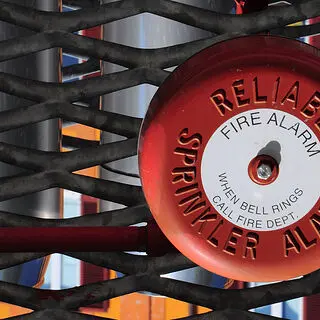
10 Tips for Preventing and Responding to Fire at a Historic House
Fire is a dangerous threat to historic structures. Once a building burns, it’s changed forever, which means that the walls, furniture, and unique historic elements lose their original ability to tell their full story. And historic preservation is nothing if not about preserving the stories places tell.
Ironically for these older structures, the biggest risk of fire is during restoration, when there’s a greater possibility of tools overheating, chemicals and their fumes mixing together, or larger numbers of people present, thus increasing the chances of a fire hazard.
Within five minutes, fire can reach 1,100 degrees Fahrenheit—hot enough to melt steel. Plus, afterwards, you’re often left with the destructive effects of smoke and water as well as fire damage, all of which can cause irreversible change.
The following toolkit offers some tips and suggestions for both prevention and cleanup.
It should go without saying, but it never hurts repeating: In the event of a fire, always evacuate immediately and call 911. And do not enter the house until your fire marshal has told you it is safe. Your personal safety (and that of your family) is more important than anything else.

photo by: Blake Burkhart/Flickr/CC BY-20
Be careful during the holidays. Tangled cords and lights close to dry fabric and pine needles can be hazardous.
1. Do your own fire prevention inspection.
This applies especially if your historic home has been renovated or gone through major restorations. Make sure that there are still fire safety and prevention measures in place. These include fire alarms, sprinkler systems, and fire extinguishers kept handy.
2. Take extra precautions during the holidays.
The holidays are a risky time for accidental fires. Be mindful when decorating, and watch out for fire hazards such as tangled cords, overloaded outlets, or lights and candles kept too close to fabric or dry pine needles. Don't forget to turn off the Christmas tree lights when you leave the house.
3. Keep important documents in a fire-proof safe.
This includes any paperwork that offers insight into the history of the property. That way, if there is severe damage or loss, you can restore your house in a way that maintains its original historic character.
4. Understand that each case of fire damage is different.
The best step you can take to ensure your historic house is taken care of after a fire is to hire a professional. Contact your local or state preservation office for recommendations.
5. Tell emergency responders that your house is old or historic.
Also let them know of any other details they should be aware of.
6. Check the roof and each floor for smoke, sparks, and embers.
Also inspect for structural damage. (Emergency responders should also do this, but it never hurts to take a look yourself once you are back in the house.)

photo by: Mark Lincoln/Flickr/CC BY-NC ND 2.0
Temporary tarps on roofs, windows, doorways, etc. can prevent water infiltration which could cause further post-fire damage.
7. Have heating, propane, and water systems tested before beginning to use them again.
Fire may cause contamination or damage filters.
8. Help prevent further damage post-fire, such as water infiltration.
You can do this by covering roofs, windows, and doorways or other enclosures with temporary tarps. This will help keep out rain, snow, and ice.
9. Brace (or remove if you can do so safely) unstable building elements.
This includes elements such as walls, ceilings, or chimneys. This can help prevent collapse and give you time while you wait for a professional or consider your next steps.
10. Get the air flowing to remove residual smoke.
Turn on fans and open windows. If there is water damage and the weather is warm, you may want to consider keeping the windows shut and turning on a dehumidifier instead. If there is a lot of loose ash or other debris that could become airborne and be harmful, wait to turn on fans and open windows until it has been dealt with.
The National Trust has many resources to help you figure out the next step to protect or assess your historic house, including Fire Safety in Historic Buildings from Preservation Books.
An earlier version of this story was published on 5/17/2016.
Preparedness Stories
-
Preservation Tips and Tools 10 Tips for Preventing and Responding to Fire at a Historic House -
Preservation Tips and Tools How to Prepare for the Next Natural Disaster -
Disaster Recovery 10 Steps to Mitigate Natural Disaster Damage






%20_%20Paul%20Sableman%20CC%20by%202.0.webp)